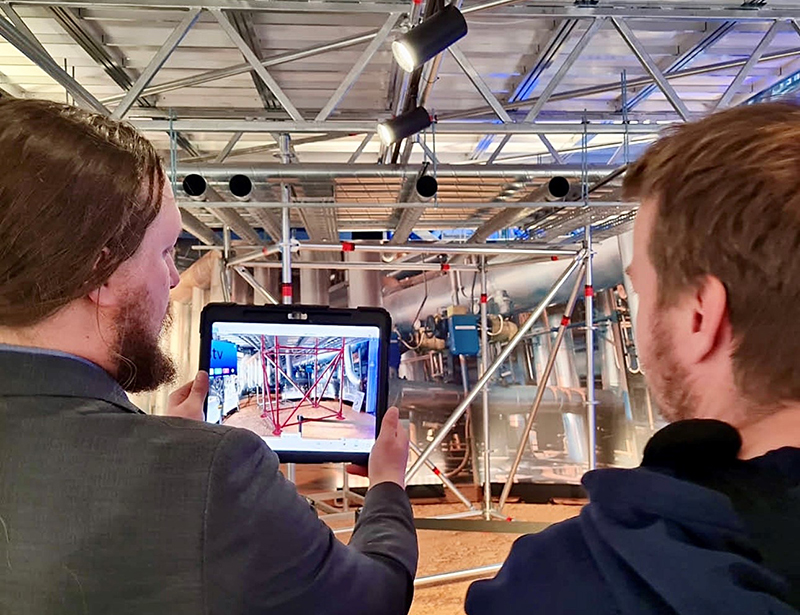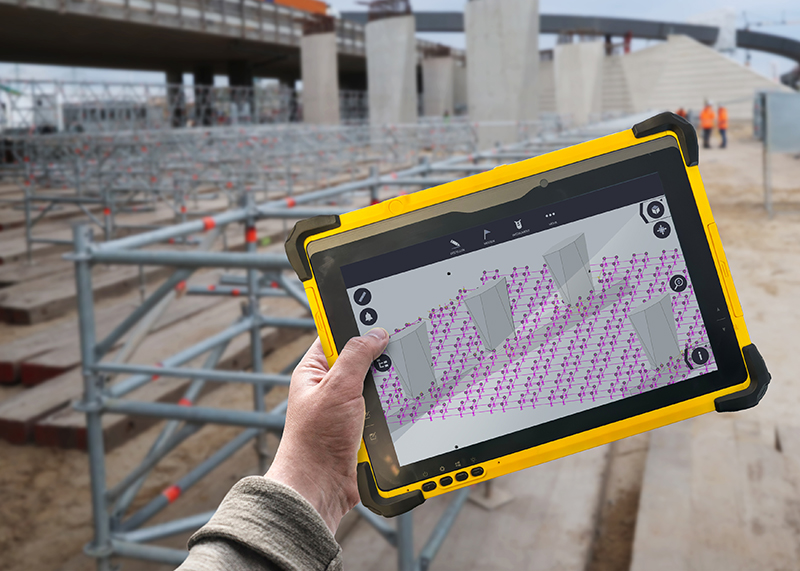
LAYHER has described its new digital innovation service – called SIM2Field – as a ‘game-changer’ in providing digital support for the creation of scaffolding structures on construction sites.
The resource aims to enable the measurement and assembly of scaffolding ‘easily, quickly, and precisely’.
On the SIM2Field platform, scaffolding is measured using a total station based on the 3D scaffolding model. Layher explained that instead of the previously ‘laborious’ process of drafting 2D plans from the 3D data, the digital planning is, so to speak, transferred back into reality and used directly on the construction site.
Laser points for the base jacks can be projected precisely onto the ground and the position of the base jacks can be checked using a prism after they have been erected. The firm revealed this is ‘significantly faster and more precise’ than conventional methods and more cost-effective than using a professional surveyor.

Additionally, for the subsequent further construction of the scaffold, the new SIM2Field XR app also provides a practical tool.
SIM2Field and the SIM2Field XR app are a natural extension to the ‘Layher SIM’ process, which demonstrates ways to digitise work steps throughout the entire lifecycle of a scaffolding project: from planning and logistics to the actual assembly.
3D planning of scaffolding structures without collisions is one of the advantages, and Layher’s promise of ‘More Possible’ also includes analysis of market challenges such as advancing digitalisation and developing solutions for customers.
Added to this are the capabilities to visualise the scaffolding realistically for coordination with other trades or safety officers; the transfer of the scaffolding planning to structural analysis programmes; and the output of material lists and assembly plans. Layher added that transparency in all work steps leads to reduced costs and increased safety and efficiency on every site.
Total stations are already established tools in surveying technology, but Layher said it has further developed this technical solution for the ‘digital, reliable, and time-saving’ erection of scaffolding. Based on the digital scaffolding model, the scaffolding substructure is precisely measured for position and height using a laser and prism. Fine adjustments such as the spindle length of head spindles are also possible. The system is controlled via a tablet connected to the total station.
SIM2Field enables the construction site to be integrated digitally into the SIM process, allowing existing data to be used. Benefits are said to include: consistent digital SIM process right up to the construction site; direct use of the 3D scaffolding model data from LayPLAN CAD for assembly; avoiding possible sources of error when measuring and setting up the scaffolds, even with complex geometries; and reduction of paper plans.
Sean Pike, MD at Layher in the UK, said, “SIM2Field innovation is genuinely a system scaffolding triumph, connecting the all-round advantages of original Layher equipment with cutting-edge technology. As scaffolding design and planning go digital, SIM2Field reflects Layher’s overarching promise to extend the safest and very highest levels of Service, support, solutions, and supply right across the sector.”











